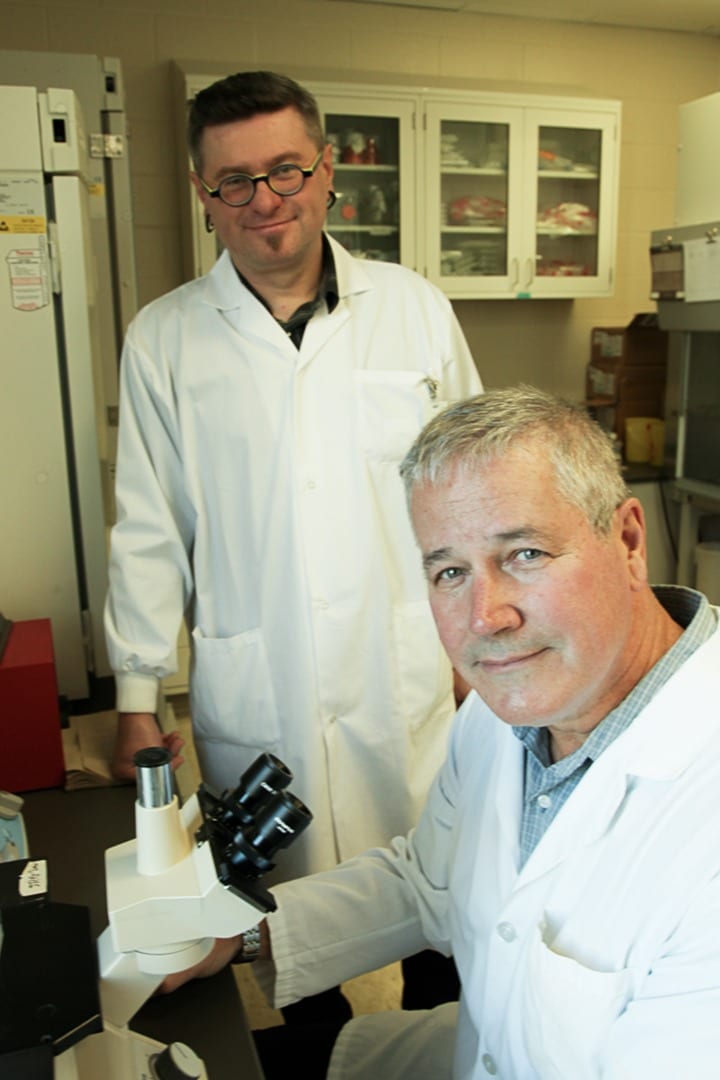
Researchers at Washington State University have developed an implantable, biofuel-powered sensor that runs on sugar and can monitor a body’s biological signals to detect, prevent and diagnose diseases.
A cross-disciplinary research team led by Subhanshu Gupta, assistant professor in WSU’s School of Electrical Engineering and Computer Science, developed the unique sensor, which, enabled by the biofuel cell, harvests glucose from body fluids to run.
The research team has demonstrated a unique integration of the biofuel cell with electronics to process physiological and biochemical signals with high sensitivity.
Their work recently was published in the IEEE Transactions on Circuits and Systems journal.
Professors Su Ha and Alla Kostyukova from the Gene and Linda School of Chemical Engineering and Bioengineering, led design of the biofuel cell.
Many popular sensors for disease detection are either watches, which need to be recharged, or patches that are worn on the skin, which are superficial and can’t be embedded. The sensor developed by the WSU team could also remove the need to prick a finger for testing of certain diseases, such as diabetes.
“The human body carries a lot of fuel in its bodily fluids through blood glucose or lactate around the skin and mouth,” said Gupta. “Using a biofuel cell opens the door to using the body as potential fuel.”
The electronics in the sensor use state-of-the-art design and fabrication to consume only a few microwatts of power while being highly sensitive. Coupling these electronics with the biofuel cell makes it more efficient than traditional battery-powered devices, said Gupta. Since it relies on body glucose, the sensor’s electronics can be powered indefinitely. So, for instance, the sensor could run on sugar produced just under the skin.
Unlike commonly used lithium-ion batteries, the biofuel cell is also completely non-toxic, making it more promising as an implant for people, he said. It is also more stable and sensitive than conventional biofuel cells.
The researchers say their sensor could be manufactured cheaply through mass production, by leveraging economies of scale.
While the sensors have been tested in the lab, the researchers are hoping to test and demonstrate them in blood capillaries, which will require regulatory approval. The researchers are also working on further improving and increasing the power output of their biofuel cell.
“This brings together the technology for making a biofuel cell with our sophisticated electronics,” said Gupta. “It’s a very good marriage that could work for many future applications.”
Learn more: WSU researchers develop sugar-powered sensor to detect, prevent disease
The Latest on: Biofuel-powered sensor
[google_news title=”” keyword=”biofuel-powered sensor” num_posts=”10″ blurb_length=”0″ show_thumb=”left”]
via Google News
The Latest on: Biofuel-powered sensor
- Researchers reveal how molecular roadblocks slow the breakdown of cellulose for biofuelson May 7, 2024 at 2:24 pm
Cellulose, which helps give plant cell walls their rigid structure, holds promise as a renewable raw material for biofuels—if researchers can accelerate the production process. Compared to the ...
- Biofuels tested in steam, diesel locomotives to cut CO2 levelson May 4, 2024 at 5:00 pm
Tobu Railway Co. embarked on a test run on Jan. 31 to see how well the train SL Taiju can operate in the Kinugawa region of Nikko partly powered by plant-derived materials. The biofuel is being ...
- Revolutionizing Transportation: A Glimpse into the Futureon May 1, 2024 at 9:52 am
The transportation industry stands on the cusp of a revolution. The integration of cutting-edge technology is reshaping the way we perceive and utilize transportation systems. From autonomous vehicles ...
- Biofuel, solar power plants proposed for Pearl Harbor would demolish historic structureson April 10, 2024 at 5:00 pm
One 10-acre site would house a biofuel-powered generation plant, while a separate 15 acres would hold a photovoltaic solar generating system, according to the draft environmental assessment.
- Sensor network shows EVs are reducing CO2 emissions in the Bay Area. Is it enough?on April 4, 2024 at 10:42 am
California, for example, doesn't account for greenhouse gases leaking out of unplugged oil wells or carbon emissions from biofuels, such as power plants that burn woody waste. "The atmosphere ...
- Virgin Atlantic Lands First Flight Powered By Biofuels. Who’s Next?on November 29, 2023 at 3:22 pm
Opinions expressed by Forbes Contributors are their own. Covering the intersection between travel and tech. Virgin Atlantic flew from London Heathrow to New York’s John F. Kennedy International ...
- power sensoron April 24, 2023 at 5:01 pm
A case in point is this super-low-cost RF power sensor that [Tech Minds (M0DQW)] recently built. It’s based on a design by [DL5NEG] that uses a single Schottky diode and a handful of passive ...
- Advanced Power Systemson October 18, 2022 at 9:30 pm
The Advanced Power Systems (APS) Research Center explores alternative energy sources that help mitigate the economic ramifications of increased oil prices. The focus is on alternative energy sources, ...
- Biofuel factson July 14, 2021 at 4:20 am
*Biofuel is made with ethanol which is produced by fermenting and then distilling starch and sugar crops such as maize, sorghum, potatoes, cassava, wheat, sugar cane and even fruit and vegetable ...
via Bing News










